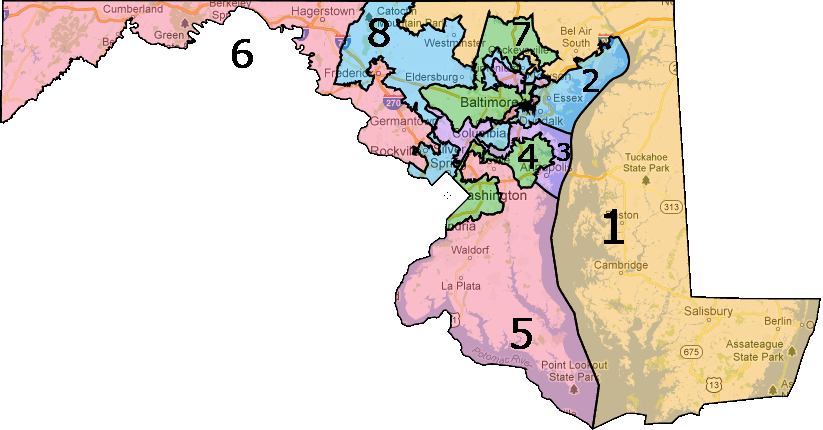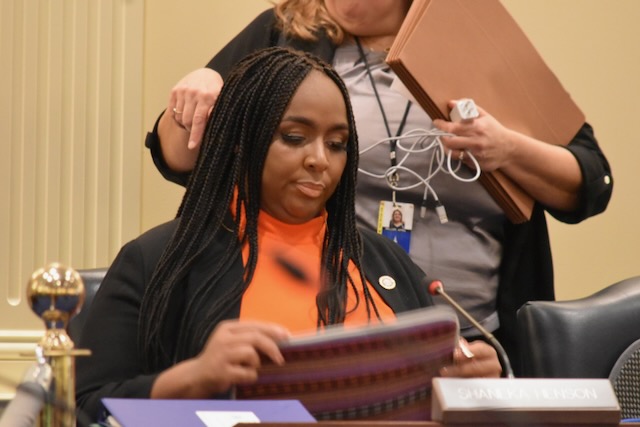Legislative Leaders Eye Early December Special Session to Draw Congressional Map

Leaders of the General Assembly are considering convening in special session during the first full week of December to tackle congressional redistricting, Maryland Matters has learned.
Members of the House and Senate Democratic caucuses have been told to block off the week of Dec. 6 for the once-a-decade process of drawing new congressional lines.
Sources caution that critical factors outside the legislature’s control could cause the calendar to shift. But the current expectation is that legislators will have received enough population data from the United States Census Bureau to be able to gather in early December.
The Census is expected to provide raw data on Aug. 16 and more “useable” numbers — as one source put it — on Sept. 30.
If those dates slide, the December session could be delayed, lawmakers said. The regular 2022 General Assembly session is scheduled to begin on Jan. 12.
Another big unknown is whether jurisdictions that believe they were shortchanged in the national headcount file suit.
“The reality is that litigation has become a part of the redistricting process in every state,” said House Majority Leader Eric G. Luedtke (D-Montgomery). “Everybody involved in redistricting needs to understand that the courts often weigh in.”
Maryland’s congressional district lines were the targets of lawsuits following the 2010 Census, and the U.S. Supreme Court twice heard challenges to the Maryland maps without ultimately taking action. Republicans especially objected to the new contours of the 6th District, which Democratic leaders freely admitted that they redrew to help a Democrat win that seat. Republicans and several political reform groups have also pointed to the boundaries of the 3rd District, which extends into several jurisdictions, as particularly egregious.
States redraw their congressional and legislative districts every 10 years, as soon as the results of the federal decennial census are available.
By law, the Maryland General Assembly must redraw the state’s 47 legislative districts, to reflect population shifts, while meeting in regular session. But no such requirement exists for congressional redistricting, so Assembly leaders have chosen to take on mapmaking for U.S. House districts in special session, if possible.
“Both series of maps are going to be very time-intensive and a lot of emotions will likely run high,” said Del. Jazz M. Lewis (D-Prince George’s), chairman of the House Democratic Caucus.
“And to make sure that we do it justice for the public, we want to separate them, so that when we’re talking about the congressional map, we’re only focused on that.”
Identifying a tentative date for lawmakers to convene in Annapolis sets the stage for a process that has enormous implications for incumbent officeholders and those thinking about running for one of Maryland’s eight House seats.
Two redistricting commissions are holding hearings around the state to solicit input from the public.
One, which has held weekly public hearings, was appointed by Gov. Lawrence J. Hogan Jr. (R). It has nine members — three Democrats, three Republicans and three independents — and is co-chaired by Cato Institute senior fellow Walter Olson, a Republican; retired federal judge Alex Williams, a Democrat; and Howard Community College President Kathleen Hetherington, an independent.
Reached Thursday, Olson said he had no comment about the legislature’s apparent timetable for congressional redistricting.
Hogan has long advocated for reducing the role of elected officials in the line-drawing process — and has said that the recommendations of his redistricting commission will serve as the basis for the maps he submits to the legislature for consideration.
Another commission, appointed more recently by Senate President Bill Ferguson (D-Baltimore City) and House Speaker Adrienne A. Jones (D-Baltimore County), is made up of the Assembly’s top four Democrats and top two Republicans. Karl S. Aro, the retired executive director of the Department of Legislative Services who was involved in the redistricting process over several decades in Annapolis, will serve as chairman.
In a tweet Friday morning after this article was first published, Hogan spokesman Michael Ricci called the legislature’s tentative plan to hold a special session on redistricting “a sham.” Ricci’s tweet included a picture of Maryland’s congressional map.
“Haven’t even held one meeting of their ‘commission’ yet and they’re already looking past it,” he wrote. “What a sham. And people wonder how we end up with districts that look like this.”
The ultimate say for both maps lies with the legislature, not the governor — unless the district lines are challenged in court.
Senate Minority Leader Bryan W. Simonaire (R-Anne Arundel) said he thinks the legislative commission’s eventual vote on new maps could come down to a party-line split.
“I’m going to go out on a limb and make a bold prediction that the vote on the commission will be five to two,” he said.
Lewis said lawmakers hope to be able to use the hearings to display “a couple maps that could be viable and get feedback from the public on.”
“We don’t want anyone feeling like anything was done in a back room,” he added.
Because much of the Census Bureau’s work involves door-to-door interaction with the public, the 2020 head count was delayed by the COVID-19 pandemic.
Last winter, some veterans of redistricting debates concluded that the legislature would find it difficult to redraw lines this year.
Drawing boundaries early could aid local elections officials, who will face a tight turnaround as they prepare for next year’s primary, set for June 28. The candidate filing deadline is Feb. 22.
Mapmaking in the 50 states will go a long way toward determining who controls the U.S. House of Representatives following the 2022 elections and beyond.
Most political analysts say Republicans are in a position to retake control of the U.S. House, largely through redistricting. Maryland is one of the few states where Democrats hold the upper hand in the redistricting process.
Maryland Democrats aggressively used their power a decade ago to maximize their two-to-one voter registration advantage. Maryland has seven Democrats and one Republican in its congressional delegation.
Knowing that court challenges are possible, Sen. Mary L. Washington (D-Baltimore City), said the goal will be “to draw lines that are not only fairly representative of the state of Maryland but also can undergo judicial scrutiny.”
Lewis acknowledged that “you can’t fully get away from the fact [that] this process is inherently political.”
Under federal law, members of Congress need not live in their districts.
Nonetheless, incumbents have been known to descend on Annapolis and work the phones vigorously during redistricting to influence the process. Many have favored precincts they are loathe to lose. In other instances they seek changes that would hurt potential rivals.
Editor’s note: This article was updated at 10:45 a.m. Friday to include a tweet from Gov. Hogan’s spokesman.
Bennett Leckrone contributed to this report.




 Creative Commons Attribution
Creative Commons Attribution